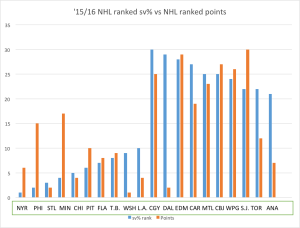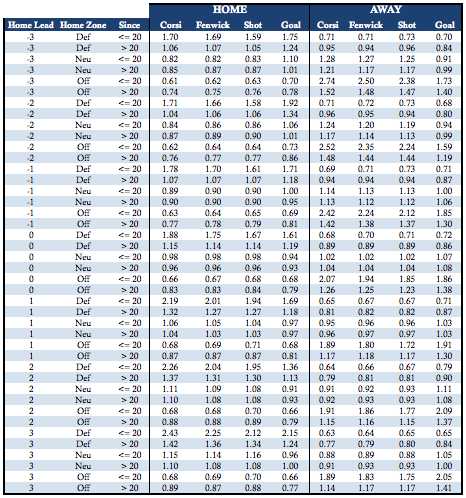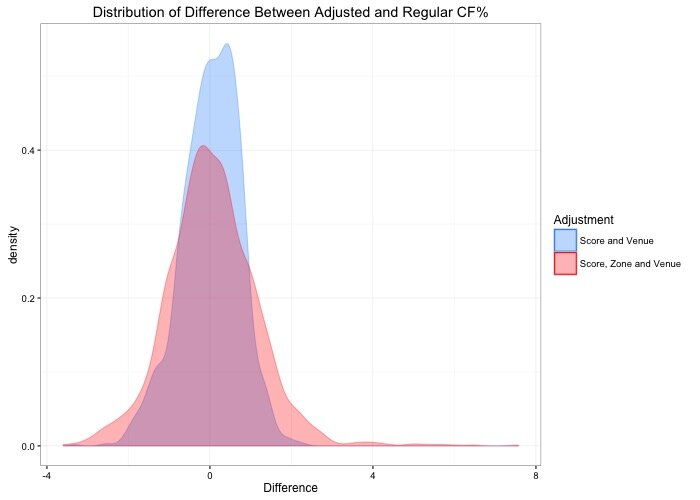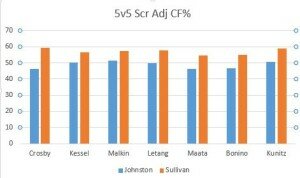*all stats are 5v5 unless otherwise indicated.
Over the last five NHL seasons, no NHL team has won a Stanley Cup after finishing in the bottom ten teams in the league in terms of save percentage.
In fact, only aging Martin Brodeur – to put it lightly – and the 2011-2012 New Jersey Devils have made the Stanley Cup Final after finishing the regular season in the bottom ten teams in save percentage.
That isn’t a promising sign for a few teams who expect to contend for a Stanley Cup this spring. The high-flying Dallas Stars, the puck hog Anaheim Ducks and the heating up San Jose Sharks all find themselves in the bottom tier in that area.
The most concerned team of the three should be the Dallas Stars, who find themselves having the second worst save percentage at 5v5 in the entire NHL. They lead only the lowly Calgary Flames in this department while the teams directly ahead of the Stars are the Edmonton Oilers and the Carolina Hurricanes. This isn’t exactly a group you want to be mentioned with in any facet if you’re hoping to make a Cup run.
Only one team has made it out of the first round of the playoffs in the last five seasons after finishing in the bottom three teams in the league in save percentage. That team was the 2010-2011 Tampa Bay Lightning after picking up Dwayne Roloson from the Islanders earlier in the year. They Lightning ultimately lost in the Eastern Conference Final to the eventual Stanley Cup champion Boston Bruins. “Rolly the goalie” played one more season with the Lightning, posting an .886 and never playing professional hockey again.
Of the 51 teams to finish in the bottom ten in save percentage in the last five seasons – a three way tie caused the extra team in there – only 15 have made the playoffs. That means that over 70% of those teams don’t make the playoffs, let alone make a run at a Stanley Cup. On average, three of these ten teams make the playoffs every season. This year the three teams have already been decided with the Sharks, Ducks and Stars already clinching spots and the other seven teams mathematically eliminated from contention (aside from the Hurricanes, but for all intents and purposes they’re eliminated.)
Before I began researching this, I thought the Ducks had the best chance of taking out the L.A. Kings in a seven game playoff series. While I still think this would be the best series since the Blackhawks/Kings Western Conference Finals in the 2014 playoffs, I would now expect the Kings to win. The Ducks currently sit in 21st in league save percentage while the Kings are 10th. Combine that with Quick’s experience over John Gibson and you have a clear advantage for the Kings in the goaltending department, but you already knew that. Gibson has taken over for the Ducks, but he hasn’t exactly been dominant either with an even strength save percentage of .919. Compare that to Quick’s .927 and the Kings have a significant advantage. Gibson’s .919 mark comes in around the area of Jimmy Howard and Scott Darling, while Quick’s .927 is sandwiched between Jake Allen and Tuukka Rask.
The San Jose Sharks, like the Stars, don’t have a definitive number one goaltender but I trust their duo of Martin Jones/James Reimer much more than the Stars duo of Kari Lehtonen/Antti Niemi. In saying that, I don’t see either of those teams making it out of the second round.
Ironically, if the playoffs started today the Ducks and Sharks would face off in a first round match-up. This would be a very entertaining series to watch and there could be a goaltending carousel. Both teams would have two capable goaltenders dressed each. Gibson/Frederik Andersen for the Ducks and Reimer/Jones for the Sharks. We could potentially see four different goaltenders start multiple games in this hypothetical series.
Teams like the Dallas Stars can mask their goaltending issues with goal scoring during the regular season, but recent years show they will have a tough time overcoming their goaltending woes in the playoffs.
*For this chart, the goal is for both bars to be low. The Stars goaltending just isn’t going to cut it.





